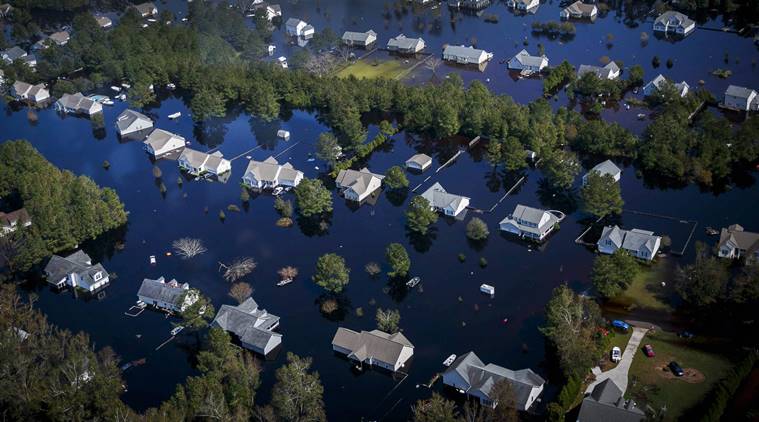North Carolina city relies on FirstNet voice, data communications during Hurricane Florence
What is in this article?
North Carolina city uses FirstNet, hopes to join statewide LMR system
“Our county uses a proprietary [land mobile radio] system. We lost that. We lost all of the cellular service in our area. Our statewide system is a VIPER system,” Lowder said. “The VIPER system is there, but the problem is that Columbus County is not on that VIPER system. What I use is about 10 hand-me-down radios from the state patrol that I use. When our proprietary primary system goes down, I revert back to those radios and supplement it with FirstNet.
“What we did was we put VIPER in our EOC in our supervisor’s hands. When we lost our primary system, we went to the FirstNet enhanced push-to-talk [service], and then we could talk to the state assets on the VIPER. So, we used FirstNet really as our primary [voice communications], so we could get back and talk to the VIPER folks.”
Lowder said the Columbus County system also failed during Hurricane Matthew in 2016, which is when he began to seek alternatives, including FirstNet. Whiteville would like to use the statewide VIPER system—a network that remained operational throughout storm—as its primary mission-critical voice service, but the city cannot afford to make such a change, he said.
“Our problem is that, being in southeastern North Carolina, our budget just doesn’t allow us to go out and buy a bunch of VIPER radios.” Lowder said. “The subscription is free [for VIPER]. We can get on it right now if we want—in fact, we are. But you’re talking $5,000 or $6,000 a pop for a portable radio, and I need probably 40 or 50 for PD [police], fire and everybody.
“We all agree that we need to go [to VIPER], but getting there financially is our issue right now.”
From a data perspective, FirstNet provided constant connectivity, but the data rates slowed during the height of the storm, Lowder said. This impacted situational awareness, as officials were monitoring sensors that provided data about the water levels in various parts of the city, he said.
Lowder said he called AT&T about the issue and was pleased with the response.
“We lost some coverage there, and I made the phone call to [our AT&T representative],” Lowder said. “They deployed that SatCOLT, and we were back up and running in just a few hours, which was amazing.
“Our data slowed down a lot. But, with the SatCOLT coming in, we were able to pick back up and get our mobile data terminals running. We actually loaned out some of our routers to the county EOC, so they could reconnect—they couldn’t connect at all. until they got some assets. So they got on FirstNet, as well, at the county EOC.”
Such communications were vital to Whiteville officials in their recovery efforts for Hurricane Florence, which Lowder said was “a lot worse” than Hurricane Matthew in 2016.
“We didn’t suffer a lot from wind damage, like we did in Matthew—this was mainly water and flooding,” Lowder said. “At one point in our town—in the swamp—2.9 [feet of water] is our average. In the height of the storm, the water at the bridge [in that area] was 12-and-half feet deep. In previous storms, our record was 20 inches. I have an unofficial rain gauge in town that was right at 26 inches, and the majority of it fell in 24 hours.
“Saturday night, the flash flooding happened so quickly that we even lost some of our assets at the city that we never thought would flood. We actually lost our public works—we never thought that would flood. We lost some of our assets there—vehicles and that kind of thing. The flooding was the major issue.”
Lowder said the water has receded, and that Whiteville personnel is working to clean damaged areas.
“There’s a lot of debris management now,” he said. “We’re getting there a day at a time.”










